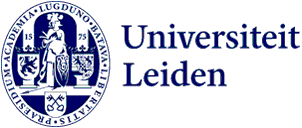
Is it a fake or not? Time for a new kind of connoisseurship
If a forged Vermeer or Rembrandt is discovered, it is world news. Yet tracing fakes has long been a low priority in art history. University lecturer Anna Tummers will receive an ERC grant of almost two million euros to change that.

Anyone who wants to know whether a painting is 'genuine' or not has to rely on on the judgement of experts. These experts determine whether a work can be attributed to a well-known artist based on style, technique, historical data and sometimes instinct. 'That judgement can be quite subjective,' says Tummers. 'For a long time, therefore, many academic art historians were reluctant to be too closely associated with it.' Moreover, the idea was that research into forgeries was not really necessary. Tummers: 'Forgeries were thought to play little or no role in art history. When I was trained by the great Rembrandt expert Ernst van de Wetering, he informed his students that forgeries of old masters posed no real challenge; it was a much bigger problem to distinguish Rembrandt from his pupils.'
Increasingly, however, that assumption has proven untenable. 'Over the past decade, we have been shaken by one scandal after another,' Tummers explains. 'Forgeries turned out to be a systematic problem that needs to be addressed. The aim with this project is to do just that.'
Higher success rate with new technique
Tummers' approach here differs from traditional expertise by using the newest technical analysis methods and computer science. 'The Night Watch has now been examined using the latest techniques, but even for Rembrandt this has not yet been done for many other of his works. That makes the probability incredibly high when we start investigating potential forgeries and similar originals in depth. It’s impossible for a forger to have copied, for example, the manner of construction, if nothing was known about it until now. It’s a bit like having a good look in the kitchen whereas previously we could only look at the finished dish.’
Ultimately, the aim of the project is to start thinking ahead. Once the main anomalies and risk factors are clear, it will become easier to predict whether a work is a forgery. 'First, we are going to try to prove with absolute certainty that we have missed forgeries,' says Tummers. 'Then we are going to look at what we could have seen and what the risk factors are. Finally, we want to start developing a kind of shortcut: checklists of red flags and sophisticated computer tools that detect salient clues. Once we know which visual patterns might be red flags, we want to map them automatically.'
Perpetual cat-and-mouse game
Whereas with other types of innovative research people eagerly await the first results, Tummers cannot necessarily count on enthusiasm for her research. Many museums or collectors would rather not hear that an expensively acquired work is actually a forgery. 'I worked for 15 years as a museum curator in England, America and the Netherlands, so fortunately I have a good network,' she explains, putting things into perspective. 'Meanwhile, I have a number of cases I want to start investigating, preferably in distinguished museums or at fairs. And then prove with as hard evidence as possible that things really are wrong, so that we have a benchmark.'
Does she expect to be able to put a definitive stop to forgers? 'I think we will at least make it just that bit harder for them. I personally have the idea, but the research will have to show that, that artists who receive a lot of technical attention immediately become a lot less attractive to imitate. At the same time, it could well be that as a result, the slightly less famous painters, the level below the very famous, so to speak, suddenly become much more attractive to fake. It continues to be a perpetual cat-and-mouse game.
